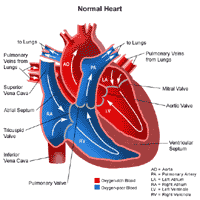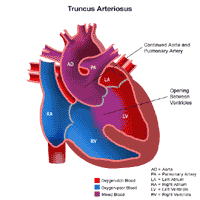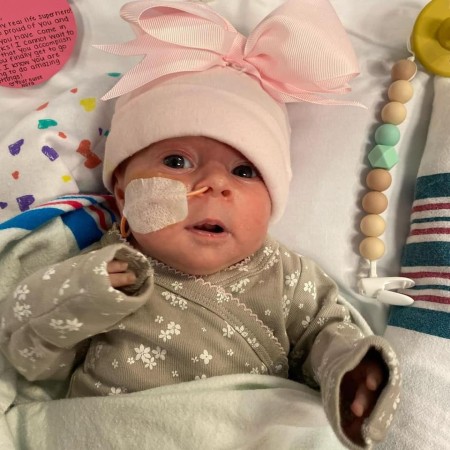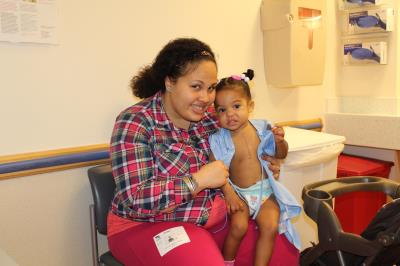Condition
Pediatric Truncus Arteriosus
Key Points About Truncus Arteriosus in Children
- Truncus arteriosus happens when there is an abnormal connection between the aorta and pulmonary artery.
- It causes oxygen-poor (blue) blood and oxygen-rich blood to mix and to be pumped to the body. This causes blue skin, lips or nails (cyanosis).
- The low levels of oxygen may not be enough to meet the body's needs and sustain life.
- The condition must be treated with surgery. Most children who have surgery will live healthy lives.
- Your child will need regular follow-up care with a pediatric cardiologist.
Frequently Asked Questions
What is truncus arteriosus in a child?
What causes truncus arteriosus in children?
What are the symptoms of truncus arteriosus in children?
How is truncus arteriosus diagnosed in children?
How is truncus arteriosus treated in children?
What are possible complications of truncus arteriosus in children?
How can I help my child live with truncus arteriosus?
When should I call my child's healthcare provider?
Providers Who Treat Truncus Arteriosus
Departments that Treat Truncus Arteriosus

Children's National Heart Center
Our expert pediatric heart team, including more than 40 subspecialties, offer advanced heart care and excellent outcomes for thousands of children every year.

Prenatal Cardiology Program
Children diagnosed with heart conditions before they are born receive comprehensive, expert care from our fetal cardiology specialists. Learn more about our Prenatal Cardiology Program.

The Zickler Family Prenatal Pediatrics Institute
The Zickler Family Prenatal Pediatrics Institute at Children's National Hospital in Washington, D.C., provides specialized care for babies during pregnancy, delivery and after birth.









